Artist:
Scott Ross
Title:
Scarlatti: The Complete Keyboard Sonatas
Year Of Release:
1988 / 2014
Label:
Erato
Genre:
Classical
Quality:
FLAC (image + .cue, log, artwork)
Total Time: 1d 10:27:53
Total Size: 13.3 GB
WebSite:
Album Preview
Disc 1
1-1 Sonata K. 1 D minor
1-2 Sonata K. 2 G major
1-3 Sonata K. 3 A minor
1-4 Sonata K. 4 G minor
1-5 Sonata K. 5 D minor
1-6 Sonata K. 6 F major
1-7 Sonata K. 7 A minor
1-8 Sonata K. 8 G minor
1-9 Sonata K. 9 D minor
1-10 Sonata K. 10 D minor
1-11 Sonata K. 11 C minor
1-12 Sonata K. 12 G minor
1-13 Sonata K. 13 G major
1-14 Sonata K. 14 G major
1-15 Sonata K. 15 E minor
1-16 Sonata K. 16 B flat major
1-17 Sonata K. 17 F major
1-18 Sonata K. 18 D minor
1-19 Sonata K. 19 F minor
Disc 2
2-1 Sonata K. 20 E major
2-2 Sonata K. 21 D major
2-3 Sonata K. 22 C minor
2-4 Sonata K. 23 D major
2-5 Sonata K. 24 A major
2-6 Sonata K. 25 F sharp minor
2-7 Sonata K. 26 A major
2-8 Sonata K. 27 B minor
2-9 Sonata K. 28 E major
2-10 Sonata K. 29 D major
2-11 Sonata K. 30 G minor
Disc 3
3-1 Sonata K. 31 G minor
3-2 Sonata K. 32 D minor
3-3 Sonata K. 33 D major
3-4 Sonata K. 34 D minor
3-5 Sonata K. 35 G minor
3-6 Sonata K. 36 A minor
3-7 Sonata K. 37 C minor
3-8 Sonata K. 38 F major
3-9 Sonata K. 39 A major
3-10 Sonata K. 40 C minor
3-11 Sonata K. 41 D minor
3-12 Sonata K. 42 B flat major
3-13 Sonata K. 43 G minor
3-14 Sonata K. 44 F major
3-15 Sonata K. 45 D major
3-16 Sonata K. 46 E major
3-17 Sonata K. 47 B flat major
3-18 Sonata K. 48 C minor
Disc 4
4-1 Sonata K. 49 C major
4-2 Sonata K. 50 F minor
4-3 Sonata K. 51 E flat major
4-4 Sonata K. 52 D minor
4-5 Sonata K. 53 D major
4-6 Sonata K. 54 A minor
4-7 Sonata K. 55 G major
4-8 Sonata K. 56 C minor
4-9 Sonata K. 57 B flat major
4-10 Sonata K. 58 C minor
4-11 Sonata K. 59 F major
4-12 Sonata K. 60 G minor
4-13 Sonata K. 61 A minor
4-14 Sonata K. 62 A major
4-15 Sonata K. 63 G major
4-16 Sonata K. 64 D minor
4-17 Sonata K. 65 A major
4-18 Sonata K. 66 B flat major
Disc 5
5-1 Sonata K. 67 F sharp minor
5-2 Sonata K. 68 E flat major
5-3 Sonata K. 69 F minor
5-4 Sonata K. 70 B flat major
5-5 Sonata K. 71 G major
5-6 Sonata K. 72 C major
5-7 Sonata K. 73 C major
5-8 Sonata K. 74 A major
5-9 Sonata K. 75 G major
5-10 Sonata K. 76 G minor
5-11 Sonata K. 77 D minor
5-12 Sonata K. 78 F major
5-13 Sonata K. 79 G major
5-14 Sonata K. 80 G major
5-15 Sonata K. 82 F major
5-16 Sonata K. 83 A major
5-17 Sonata K. 84 C minor
5-18 Sonata K. 85 F major
5-19 Sonata K. 86 C major
5-20 Sonata K. 87 B minor
5-21 Sonata K. 92 D minor
5-22 Sonata K. 93 G minor
Disc 6
6-1 Sonata K. 94 F major
6-2 Sonata K. 95 C major
6-3 Sonata K. 96 D major
6-4 Sonata K. 97 G minor
6-5 Sonata K. 98 E minor
6-6 Sonata K. 99 C minor
6-7 Sonata K. 100 C major
6-8 Sonata K. 101 A major
6-9 Sonata K. 102 G minor
6-10 Sonata K. 103 G major
6-11 Sonata K. 104 G major
6-12 Sonata K. 105 G major
6-13 Sonata K. 106 F major
6-14 Sonata K. 107 F major
6-15 Sonata K. 108 G minor
6-16 Sonata K. 109 A minor
6-17 Sonata K. 110 A minor
6-18 Sonata K. 111 G minor
6-19 Sonata K. 112 B flat major
Disc 7
7-1 Sonata K. 113 A major
7-2 Sonata K. 114 A major
7-3 Sonata K. 115 C minor
7-4 Sonata K. 116 C minor
7-5 Sonata K. 117 C major
7-6 Sonata K. 118 D major
7-7 Sonata K. 119 D minor
7-8 Sonata K. 120 D minor
7-9 Sonata K. 121 G minor
7-10 Sonata K. 122 D major
7-11 Sonata K. 123 E flat major
7-12 Sonata K. 124 G major
7-13 Sonata K. 125 G major
Disc 8
8-1 Sonata K. 126 C minor
8-2 Sonata K. 127 A flat major
8-3 Sonata K. 128 B flat minor
8-4 Sonata K. 129 C minor
8-5 Sonata K. 130 A flat major
8-6 Sonata K. 131 B flat minor
8-7 Sonata K. 132 C major
8-8 Sonata K. 133 C major
8-9 Sonata K. 134 E major
8-10 Sonata K. 135 E major
8-11 Sonata K. 136 E major
8-12 Sonata K. 137 D major
8-13 Sonata K. 138 D minor
8-14 Sonata K. 139 C minor
Disc 9
9-1 Sonata K. 140 D major
9-2 Sonata K. 141 D minor
9-3 Sonata K. 142 F sharp minor
9-4 Sonata K. 143 C major
9-5 Sonata K. 144 G major
9-6 Sonata K. 145 D major
9-7 Sonata K. 146 G major
9-8 Sonata K. 147 E minor
9-9 Sonata K. 148 A minor
9-10 Sonata K. 149 A minor
9-11 Sonata K. 150 F major
9-12 Sonata K. 151 F major
9-13 Sonata K. 152 G major
9-14 Sonata K. 153 G major
9-15 Sonata K. 154 B flat major
9-16 Sonata K. 155 B flat major
Disc 10
10-1 Sonata K. 156 C major
10-2 Sonata K. 157 C major
10-3 Sonata K. 158 C minor
10-4 Sonata K. 159 C major
10-5 Sonata K. 160 D major
10-6 Sonata K. 161 D major
10-7 Sonata K. 162 E major
10-8 Sonata K. 163 E major
10-9 Sonata K. 164 D major
10-10 Sonata K. 165 C major
10-11 Sonata K. 166 C major
10-12 Sonata K. 167 F major
10-13 Sonata K. 168 F major
10-14 Sonata K. 169 G major
10-15 Sonata K. 170 D major
10-16 Sonata K. 171 G major
10-17 Sonata K. 172 B flat major
Disc 11
11-1 Sonata K. 173 B minor
11-2 Sonata K. 174 C minor
11-3 Sonata K. 175 A minor
11-4 Sonata K. 176 d minor
11-5 Sonata K. 177 D major
11-6 Sonata K. 178 D major
11-7 Sonata K. 179 g minor
11-8 Sonata K. 180 G major
11-9 Sonata K. 181 A major
11-10 Sonata K. 182 A major
11-11 Sonata K. 183 f minor
11-12 Sonata K. 184 f minor
11-13 Sonata K. 185 f minor
11-14 Sonata K. 186 f minor
11-15 Sonata K. 187 f minor
11-16 Sonata K. 188 a minor
Disc 12
12-1 Sonata K. 189 B flat major
12-2 Sonata K. 190 B flat major
12-3 Sonata K. 191 d minor
12-4 Sonata K. 192 E flat major
12-5 Sonata K. 193 E flat major
12-6 Sonata K. 194 F major
12-7 Sonata K. 195 F major
12-8 Sonata K. 196 g minor
12-9 Sonata K. 197 b minor
12-10 Sonata K. 198 e minor
12-11 Sonata K. 199 C major
12-12 Sonata K. 200 C major
12-13 Sonata K. 201 G major
12-14 Sonata K. 202 B flat major
12-15 Sonata K. 203 e minor
Disc 13
13-1 Sonata K. 204a Suite in f minor
13-2 Sonata K. 204b Suite in f minor
13-3 Sonata K. 205 F major
13-4 Sonata K. 206 E major
13-5 Sonata K. 207 E major
13-6 Sonata K. 208 A major
13-7 Sonata K. 209 A major
13-8 Sonata K. 210 G major
13-9 Sonata K. 211 A major
13-10 Sonata K. 212 A major
13-11 Sonata K. 213 D minor
13-12 Sonata K. 214 D major
13-13 Sonata K. 215 E major
13-14 Sonata K. 216 E major
Disc 14
14-1 Sonata K. 217 a minor
14-2 Sonata K. 218 a minor
14-3 Sonata K. 219 A major
14-4 Sonata K. 220 A major
14-5 Sonata K. 221 A major
14-6 Sonata K. 222 A major
14-7 Sonata K. 223 D major
14-8 Sonata K. 224 D major
14-9 Sonata K. 225 C major
14-10 Sonata K. 226 c minor
14-11 Sonata K. 227 b minor
14-12 Sonata K. 228 B flat major
14-13 Sonata K. 229 B flat major
Disc 15
15-1 Sonata K. 230 c minor
15-2 Sonata K. 231 C major
15-3 Sonata K. 232 e minor
15-4 Sonata K. 233 e minor
15-5 Sonata K. 234 g minor
15-6 Sonata K. 235 G major
15-7 Sonata K. 236 D major
15-8 Sonata K. 237 D major
15-9 Sonata K. 238 f minor
15-10 Sonata K. 239 f minor
15-11 Sonata K. 240 G major
15-12 Sonata K. 241 G major
15-13 Sonata K. 242 C major
15-14 Sonata K. 243 C major
Disc 16
16-1 Sonata K. 244 B major
16-2 Sonata K. 245 B major
16-3 Sonata K. 246 c sharp minor
16-4 Sonata K. 247 c sharp minor
16-5 Sonata K. 248 B flat major
16-6 Sonata K. 249 B flat major
16-7 Sonata K. 250 C major
16-8 Sonata K. 251 C major
16-9 Sonata K. 252 E flat major
16-10 Sonata K. 253 E flat major
16-11 Sonata K. 254 c minor
16-12 Sonata K. 255 C major
16-13 Sonata K. 256 F major
16-14 Sonata K. 257 F major
Disc 17
17-1 Sonata K. 258 D major
17-2 Sonata K. 259 G major
17-3 Sonata K. 260 G major
17-4 Sonata K. 261 B major
17-5 Sonata K. 262 B major
17-6 Sonata K. 263 e minor
17-7 Sonata K. 264 E major
17-8 Sonata K. 265 a minor
17-9 Sonata K. 266 B flat major
17-10 Sonata K. 267 B flat major
Disc 18
18-1 Sonata K. 268 A major
18-2 Sonata K. 269 A major
18-3 Sonata K. 270 C major
18-4 Sonata K. 271 C major
18-5 Sonata K. 272 B flat major
18-6 Sonata K. 273 B flat major
18-7 Sonata K. 274 F major
18-8 Sonata K. 275 F major
18-9 Sonata K. 276 F major
18-10 Sonata K. 277 D major
18-11 Sonata K. 278 D major
18-12 Sonata K. 279 A major
18-13 Sonata K. 280 A major
18-14 Sonata K. 281 D major
18-15 Sonata K. 282 D major
18-16 Sonata K. 283 G major
18-17 Sonata K. 284 G major
18-18 Sonata K. 285 A major
18-19 Sonata K. 286 A major
Disc 19
19-1 Sonata K. 289 G major
19-2 Sonata K. 290 G major
19-3 Sonata K. 291 e minor
19-4 Sonata K. 292 e minor
19-5 Sonata K. 293 b minor
19-6 Sonata K. 294 d minor
19-7 Sonata K. 295 d minor
19-8 Sonata K. 296 F major
19-9 Sonata K. 297 F Major
19-10 Sonata K. 298 D Major
19-11 Sonata K. 299 D Major
19-12 Sonata K. 300 A major
19-13 Sonata K. 301 A major
Disc 20
20-1 Sonata K. 302 c minor
20-2 Sonata K. 303 c minor
20-3 Sonata K. 304 G major
20-4 Sonata K. 305 G major
20-5 Sonata K. 306 E flat major
20-6 Sonata K. 307 E flat major
20-7 Sonata K. 308 C major
20-8 Sonata K. 309 C major
20-9 Sonata K. 310 B flat major
20-10 Sonata K. 311 B flat major
20-11 Sonata K. 312 D major
20-12 Sonata K. 313 D major
20-13 Sonata K. 314 G major
20-14 Sonata K. 315 g minor
20-15 Sonata K. 316 F major
20-16 Sonata K. 317 F major
Disc 21
21-1 Sonata K. 318 F sharp major
21-2 Sonata K. 319 F sharp major
21-3 Sonata K. 320 A major
21-4 Sonata K. 321 A major
21-5 Sonata K. 322 A major
21-6 Sonata K. 323 A major
21-7 Sonata K. 324 G major
21-8 Sonata K. 325 G major
21-9 Sonata K. 326 C major
21-10 Sonata K. 327 C major
21-11 Sonata K. 329 C major
21-12 Sonata K. 330 C major
21-13 Sonata K. 331 B flat major
21-14 Sonata K. 332 B flat major
21-15 Sonata K. 333 D major
21-16 Sonata K. 334 B flat major
21-17 Sonata K. 335 D major
21-18 Sonata K. 336 D major
21-19 Sonata K. 337 G major
21-20 Sonata K. 338 G major
Disc 22
22-1 Sonata K. 339 C major
22-2 Sonata K. 340 C major
22-3 Sonata K. 341 a minor
22-4 Sonata K. 342 A major
22-5 Sonata K. 343 A major
22-6 Sonata K. 344 A major
22-7 Sonata K. 345 D major
22-8 Sonata K. 346 D major
22-9 Sonata K. 347 g minor
22-10 Sonata K. 348 G major
22-11 Sonata K. 349 F major
22-12 Sonata K. 350 F major
22-13 Sonata K. 351 B flat major
22-14 Sonata K. 352 D major
22-15 Sonata K. 353 D major
22-16 Sonata K. 354 F major
22-17 Sonata K. 355 F major
Disc 23
23-1 Sonata K. 356 C major
23-2 Sonata K. 357 C major
23-3 Sonata K. 358 D major
23-4 Sonata K. 359 D major
23-5 Sonata K. 360 B flat major
23-6 Sonata K. 361 B flat major
23-7 Sonata K. 362 C major
23-8 Sonata K. 3643 C major
23-9 Sonata K. 364 f minor
23-10 Sonata K. 365 f minor
23-11 Sonata K. 366 F major
23-12 Sonata K. 367 F major
23-13 Sonata K. 368 A major
23-14 Sonata K. 369 A major
23-15 Sonata K. 370 E flat major
23-16 Sonata K. 371 E flat major
Disc 24
24-1 Sonata K. 372 G major
24-2 Sonata K. 373 g minor
24-3 Sonata K. 374 G major
24-4 Sonata K. 375 G major
24-5 Sonata K. 376 b minor
24-6 Sonata K. 377 b minor
24-7 Sonata K. 378 F major
24-8 Sonata K. 379 F major
24-9 Sonata K. 380 E Major
24-10 Sonata K. 381 E major
24-11 Sonata K. 382 a minor
24-12 Sonata K. 383 a minor
24-13 Sonata K. 384 C major
24-14 Sonata K. 385 C major
24-15 Sonata K. 386 f minor
24-16 Sonata K. 387 f minor
24-17 Sonata K. 388 D major
24-18 Sonata K. 389 D major
24-19 Sonata K. 390 G major
24-20 Sonata K. 391 G major
Disc 25
25-1 Sonata K. 392 B flat major
25-2 Sonata K. 393 B flat major
25-3 Sonata K. 394 e minor
25-4 Sonata K. 395 E major
25-5 Sonata K. 396 d minor
25-6 Sonata K. 397 D major
25-7 Sonata K. 398 C major
25-8 Sonata K. 399 C major
25-9 Sonata K. 400 D major
25-10 Sonata K. 401 D major
25-11 Sonata K. 402 e minor
25-12 Sonata K. 403 E major
25-13 Sonata K. 404 A major
25-14 Sonata K. 405 A major
25-15 Sonata K. 406 C major
25-16 Sonata K. 407 C major
25-17 Sonata K. 408 b minor
25-18 Sonata K. 409 b minor
Disc 26
26-1 Sonata K. 410 B flat major
26-2 Sonata K. 411 B flat major
26-3 Sonata K. 412 G major
26-4 Sonata K. 413 G major
26-5 Sonata K. 414 D major
26-6 Sonata K. 415 D major
26-7 Sonata K. 416 D major
26-8 Sonata K. 417 d minor
26-9 Sonata K. 418 F major
26-10 Sonata K. 419 F major
26-11 Sonata K. 420 C major
26-12 Sonata K. 421 C major
26-13 Sonata K. 422 C major
26-14 Sonata K. 423 C major
26-15 Sonata K. 424 G major
26-16 Sonata K. 425 G major
26-17 Sonata K. 426 g minor
26-18 Sonata K. 427 G major
Disc 27
27-1 Sonata K. 428 A major
27-2 Sonata K. 429 A major
27-3 Sonata K. 430 D major
27-4 Sonata K. 431 G major
27-5 Sonata K. 432 G major
27-6 Sonata K. 433 G major
27-7 Sonata K. 434 d minor
27-8 Sonata K. 435 D major
27-9 Sonata K. 436 D major
27-10 Sonata K. 437 F major
27-11 Sonata K. 438 F major
27-12 Sonata K. 439 B flat major
27-13 Sonata K. 440 B flat major
27-14 Sonata K. 441 B flat major
27-15 Sonata K. 442 B flat major
27-16 Sonata K. 443 D major
27-17 Sonata K. 444 d minor
27-18 Sonata K. 445 F major
27-19 Sonata K. 446 F major
27-20 Sonata K. 447 f sharp minor
27-21 Sonata K. 448 f sharp minor
Disc 28
28-1 Sonata K. 449 G major
28-2 Sonata K. 450 g minor
28-3 Sonata K. 451 a minor
28-4 Sonata K. 452 A major
28-5 Sonata K. 453 A major
28-6 Sonata K. 454 G major
28-7 Sonata K. 455 G major
28-8 Sonata K. 456 A major
28-9 Sonata K. 457 A major
28-10 Sonata K. 458 D major
28-11 Sonata K. 459 d minor
28-12 Sonata K. 460 C major
28-13 Sonata K. 461 C major
28-14 Sonata K. 462 f minor
28-15 Sonata K. 463 f minor
28-16 Sonata K. 464 C major
28-17 Sonata K. 465 C major
28-18 Sonata K. 466 f minor
28-19 Sonata K. 467 f minor
Disc 29
29-1 Sonata K. 468 F major
29-2 Sonata K. 469 F major
29-3 Sonata K. 470 G major
29-4 Sonata K. 471 G major
29-5 Sonata K. 472 B flat major
29-6 Sonata K. 473 B flat major
29-7 Sonata K. 474 E flat major
29-8 Sonata K. 475 E flat major
29-9 Sonata K. 476 g minor
29-10 Sonata K. 477 G major
29-11 Sonata K. 478 D major
29-12 Sonata K. 479 D major
29-13 Sonata K. 480 D major
29-14 Sonata K. 481 f minor
29-15 Sonata K. 482 F major
29-16 Sonata K. 483 F major
29-17 Sonata K. 484 D major
Disc 30
30-1 Sonata K. 485 C major
30-2 Sonata K. 486 C major
30-3 Sonata K. 487 C major
30-4 Sonata K. 488 B flat major
30-5 Sonata K. 489 B flat major
30-6 Sonata K. 490 D Major
30-7 Sonata K. 491 D Major
30-8 Sonata K. 492 D Major
30-9 Sonata K. 493 G major
30-10 Sonata K. 494 G major
30-11 Sonata K. 495 E major
30-12 Sonata K. 496 E major
30-13 Sonata K. 497 b minor
30-14 Sonata K. 498 b minor
30-15 Sonata K. 499 A major
30-16 Sonata K. 500 A major
Disc 31
31-1 Sonata K. 501 C major
31-2 Sonata K. 502 C major
31-3 Sonata K. 503 B flat major
31-4 Sonata K. 504 B flat major
31-5 Sonata K. 505 F major
31-6 Sonata K. 506 F major
31-7 Sonata K. 507 E flat major
31-8 Sonata K. 508 E flat major
31-9 Sonata K. 509 d minor
31-10 Sonata K. 510 D major
31-11 Sonata K. 511 D major
31-12 Sonata K. 512 D major
31-13 Sonata K. 513 C major
31-14 Sonata K. 514 C major
31-15 Sonata K. 515 C major
31-16 Sonata K. 516 d minor
31-17 Sonata K. 517 d minor
31-18 Sonata K. 518 f minor
31-19 Sonata K. 519 F major
Disc 32
32-1 Sonata K. 520 G major
32-2 Sonata K. 521 G major
32-3 Sonata K. 522 G major
32-4 Sonata K. 523 G major
32-5 Sonata K. 524 F major
32-6 Sonata K. 525 F major
32-7 Sonata K. 526 c minor
32-8 Sonata K. 527 C major
32-9 Sonata K. 528 B flat major
32-10 Sonata K. 529 B flat major
32-11 Sonata K. 530 E major
32-12 Sonata K. 531 E major
32-13 Sonata K. 532 a minor
32-14 Sonata K. 533 A major
32-15 Sonata K. 534 D major
32-16 Sonata K. 535 D major
32-17 Sonata K. 536 A major
32-18 Sonata K. 537 A major
32-19 Sonata K. 538 G major
32-20 Sonata K. 539 G major
Disc 33
33-1 Sonata K. 540 F major
33-2 Sonata K. 541 F major
33-3 Sonata K. 542 F major
33-4 Sonata K. 543 F major
33-5 Sonata K. 544 B flat major
33-6 Sonata K. 545 B flat major
33-7 Sonata K. 546 g minor
33-8 Sonata K. 547 G major
33-9 Sonata K. 548 C major
33-10 Sonata K. 549 C major
33-11 Sonata K. 550 B flat major
33-12 Sonata K. 551 B flat major
33-13 Sonata K. 552 d minor
33-14 Sonata K. 553 d minor
33-15 Sonata K. 554 F major
33-16 Sonata K. 555 F minor
Disc 34
34-1 Sonata K. 81 : Grave
34-2 Sonata K. 81 : Allegro
34-3 Sonata K. 81 : Grave
34-4 Sonata K. 81 : Allegro
34-5 Sonata K. 88 : Grave
34-6 Sonata K. 88 : Andante moderato
34-7 Sonata K. 88 : Allegro
34-8 Sonata K. 88 : Minuet
34-9 Sonata K. 89 : Allegro
34-10 Sonata K. 89 : Grave
34-11 Sonata K. 89 : Allegro
34-12 Sonata K. 90 : Grave
34-13 Sonata K. 90 : Allegro
34-14 Sonata K. 90 : 3rd movement
34-15 Sonata K. 90 : Allegro
34-16 Sonata K. 91 : Grave
34-17 Sonata K. 91 : Allegro
34-18 Sonata K. 91 : Grave
34-19 Sonata K. 91 : Allegro
34-20 Sonata K. 287 for organ in D major : Andante - Allegro
34-21 Sonata K. 288 for organ in D major : Allegro
34-22 Sonata K. 328 G major
Scott Ross’s award-winning complete Scarlatti keyboard sonatas, first released on Erato in 1988 stands as a landmark in recording history. This re-release marks 25 years since the death in June 1989 of the American-born harpsichordist, aged just 38.
In the 1980s, Ross became the first musician to record the complete keyboard sonatas – 555 in all – of Domenico Scarlatti (1685-1757). Though born in Pittsburgh, he moved with his mother to France in his early teens and attended the conservatories of Nice and Paris. After a 12-year stint as an academic in Quebec, he returned to France permanently in 1985 and made his home there.
To celebrate the 300th anniversary of Scarlatti’s birth in 1985, French radio asked Ross to perform the composer’s complete sonatas, for broadcast in a series of weekly programmes. He recorded two sonatas a day over a period of 15 months in 1984/85. Many had never been recorded before, even though a limited selection had featured in the repertoire of major pianists – including Horowitz, Michelangeli, Gieseking, Haskil and Gilels – for decades.
Most of the recordings were made – on four different harpsichords (Italian and French), to ensure a variety of timbre – at the Paris studios of Radio France, although the entire project was launched with the sessions for the Essercizi Kk. 1-30 at the Château d’Assas, near Montpellier in the south of France. The château played an important role in Ross’s life: he was first invited to play on the its harpsichord while still a student in Nice, and later on he lived in a house in its grounds.
Also an organist and pianist, Scott Ross lived a bohemian life and was something of a maverick – looking more like a rock musician than a scholarly harpsichordist. There was, however, no doubt of his credentials as a scrupulous and highly dedicated musician. He was also a passionate and brilliant performer, celebrated not just in Scarlatti, but in the music of Bach, Rameau and Couperin. When the Scarlatti sonatas were first released, the New York Times said: “Ross possesses all the necessary virtuoso flair and stylish sensitivity to bring this exciting music bounding to life.''
Domenico Scarlatti’s sonatas are colourful, intense and captivating one-movement works, which explore a variety of expressive worlds and technical possibilities. Each lasts just a few minutes and many reflect the musical influence of the Iberian peninsula (both Spain and Portugal), where the Neapolitan-born Scarlatti spent much of his life, notably as the music master of Maria Barbara, a Portuguese princess who later became Queen of Spain. In Madrid, towards the end of his life, Scarlatti became friendly with the legendary castrato Farinelli, who returned to Italy with copies of the manuscripts of the sonatas.
In 1988 Scott Ross received the Grand Prix du Disque for his complete Scarlatti sonatas from France’s prestigious and authoritative Académie Charles Cros, among many other awards. In 1988 he was named Musical Personality of the Year by the Syndicat des critiques français.
He had already been suffering from ill health when he was recording the sonatas, and he died of Aids-related causes in June 1989. As the BBC Music Magazine said, the complete edition was “a heroic achievement”, while in 1989 one of Gramophone’s critics called it the ‘Record of the Eighties’, describing it as “a fitting, self-erected monument” to Scott Ross. The harpsichordist claimed that his personal favourite among the sonatas was No 208, which he described as: “the most beautiful, even if it is also the slowest, and the happiest – it’s the sunniest of all of them.”
The 34 CD are presented in deluxe packaging, with a 20-page printed booklet; this is complemented by 200 pages of online documentation, including a commentary on each of the sonatas (along with the musical notation of its opening bars).
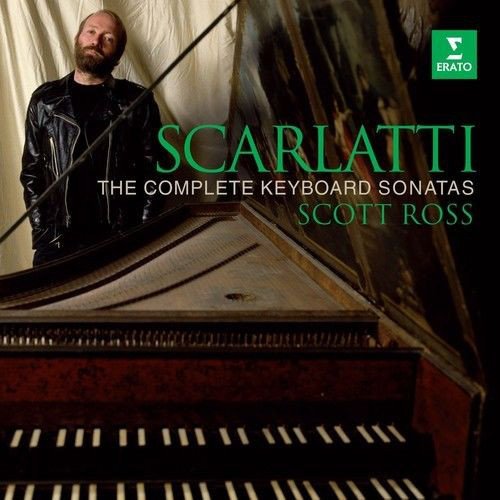


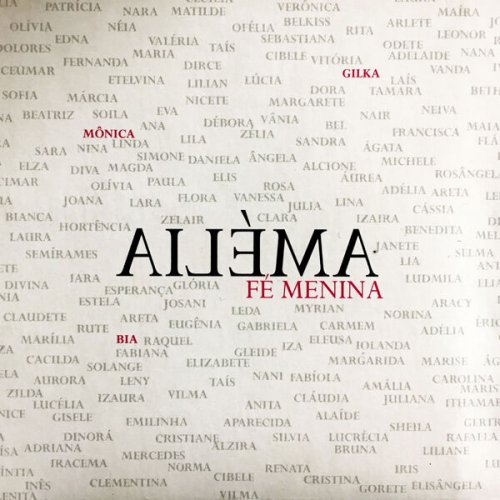
![Grises - Eveil (2025) [Hi-Res] Grises - Eveil (2025) [Hi-Res]](https://www.dibpic.com/uploads/posts/2025-12/1766127968_cover.jpg)
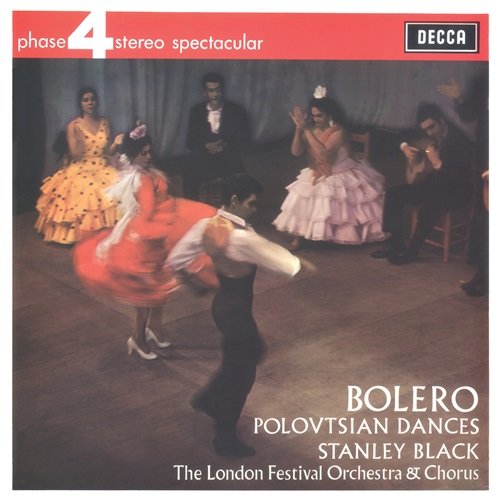
![Nana Vasconcelos - Saudades (1980/2025) [Hi-Res] Nana Vasconcelos - Saudades (1980/2025) [Hi-Res]](https://www.dibpic.com/uploads/posts/2025-12/1766056483_cover.jpg)
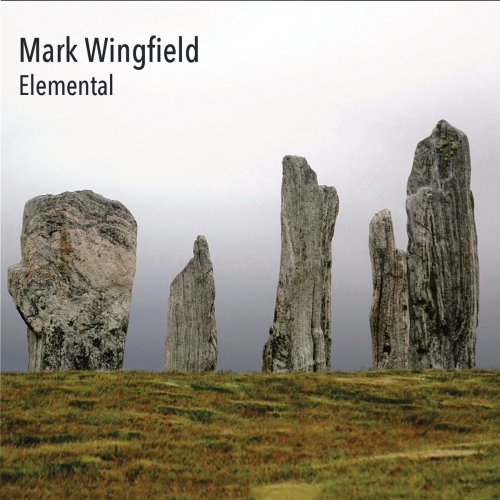
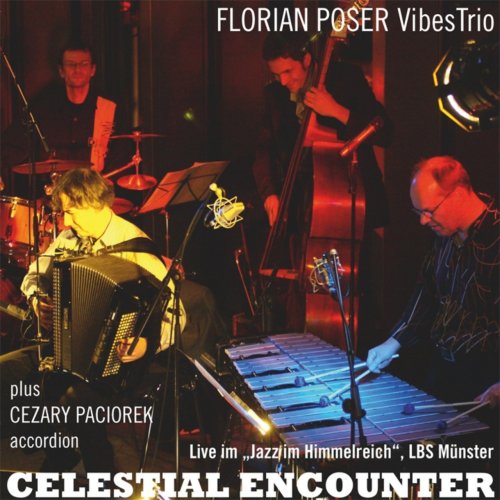
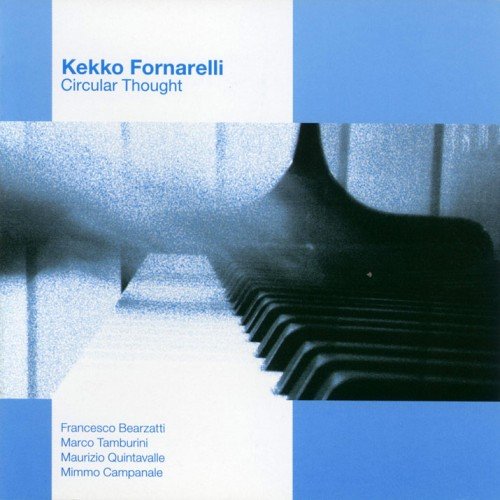
![The Baroque Jazz Ensemble - The Baroque Jazz Ensemble (feat. Ira Schulman) (2025) [Hi-Res] The Baroque Jazz Ensemble - The Baroque Jazz Ensemble (feat. Ira Schulman) (2025) [Hi-Res]](https://img.israbox.com/img/2025-12/19/yehoqbmzkuwk180c26lz85clx.jpg)